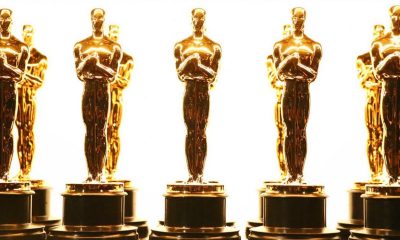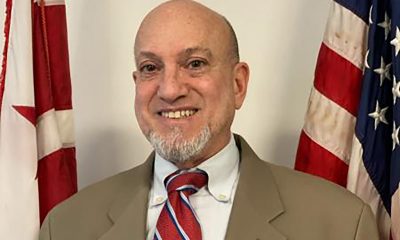Arts & Entertainment
Out actor on his ‘Real O’Neals’ experience
Noah builds comedic arc on Savage-based sitcom

Noah Galvin might be new on your television screen, but he’s no stranger to the entertainment business. Starting out as a child stage actor in New York, Galvin worked his way from Broadway to circus to eventually landing the lead role as Kenny on “The Real O’Neals.”
Kenny, loosely based on Dan Savage’s teen years, comes out to his conservative Catholic family in Chicago. After his big admission, he must learn how to navigate his sexuality and high school at the same time. The show, which airs Wednesdays at 8:30 p.m. on ABC, shows his family is far from perfect themselves. His parents (Martha Plimpton and Jay Ferguson) are getting divorced, his older jock brother (Matt Shively) is anorexic and his little sister (Bebe Wood) has a case of sticky fingers while starting to question her own faith. A Blade interview with the show’s producer is here.
Galvin says although he came out around high school like Kenny does, their experiences were hardly the same. The out actor spoke with the Blade about how shaving the side of his head was an integral part of his coming out and how Savage became a mentor for him in work and his personal life.
WASHINGTON BLADE: Kenny’s high school experience is kind of chaotic after he comes out. Was your high school experience similar to Kenny’s? When did you come out?
NOAH GALVIN: I came out when I was 14. I had been working for Cirque du Soleil the year before and had been homeschooling, and then decided I didn’t want to homeschool any more because it was so isolating. So I held myself back a year and went to this regular public school in Westchester, N.Y., that I had friends at. Before I went back to school I had my friends shave the side of my head and pierce my right ear in the bathroom so I could really just walk into the school a completely new, out, gay person. The chaos came from people around me, people who had to deal with this. Kenny’s struggles are different. They’re sort of internal. They’re sort of self-imposed. He’s creating this problem himself, and no one really has an issue with it at school. It’s just him freaking out about it and not wanting to face these things.
BLADE: What’s been the biggest challenge bringing Kenny to life?
GALVIN: I don’t know if I would call this a challenge, but Kenny’s very comfortable with himself. It was a cool thing to portray a different coming out experience.
BLADE: In the episode “The Real Spring Fever,” Kenny experiments with online dating. Do you have any online dating horror stories?
GALVIN: I have a couple dating apps. I have Tinder and what not. I don’t use them per se, but I have them. No horror stories to date, thank God. I’ll let you know when I do though.
BLADE: What’s been your favorite episode to film?
GALVIN: Honestly, I don’t know if I have one. I have favorite moments from all of them. They’re all so close to my heart. I really love this show and I think it’s really great, funny and important. We’ve gotten to work with awesome guest stars. Frances Conroy of “Six Feet Under” fame plays our grandmother, and “Six Feet Under” has been my favorite show forever. So getting to work with her is incredible. Tim Gunn is on an episode and he is just one of the most wonderful men in the world just so sweet, smart and supportive.
BLADE: What’s the atmosphere like on set?
GALVIN: Joyous. We have an amazing time together. Our cast gets along so freakishly well. None of us chemistry tested together and for some reason we just like magically melded together so perfectly. Something that Martha (Plimpton) and Jay (Ferguson) realized like two-thirds of the way into the process, maybe even later, was that we were all child actors. So I think that sort of lent itself to us getting to know each other and liking each other. We all have a similar level of professionalism. We’re all about do the work, leave it at work and then go on with our lives. On set it’s hard; you’re doing 14- and 16-hour days, and it’s a comedy so you’ve got to keep your energy up the whole time. Jay is a big proponent of game playing, so on set it’s mostly just us being told to quiet down because we’re yelling and screaming and playing Catch Phrase.
BLADE: You’re playing a young Dan Savage on the show. Did you get to meet him and what was your impression of him?
GALVIN: Dan is a good friend. We initially met during the filming of the pilot. At first he was sort of distancing himself from me and I didn’t know why. Eventually I sat down with him and was like, “What’s up, man?” And it came out that he thought I was like 15 years old. Upon realizing I was 21, he was like, “Oh thank god” and was able to really get into it with me, and talk about things which was really nice. He’s a very busy man so he wasn’t there for a lot of the filming of the whole series. He’s a non-creative executive producer, so he doesn’t write anything for the show. I was in touch with him and any time I had a question or a problem I would turn to him. Both professionally and unprofessionally he was a source of advice for me.
BLADE: Are you still in school or are you acting full time?
GALVIN: I am acting full time. The college application process was a big point of contention in my family. I’m an actor and I knew I was going to be an actor. I had been working professionally since I was 10. It was kind of a struggle for me to finish school just because I was working. My senior year of high school it came down to it, and I finally decided I wasn’t going to apply to colleges or conservatories. I was just going to start working and see what happens. And this (“The Real O’Neals”) came along months after which was great.
BLADE: Are you concerned about being typecast as the “gay guy” for future roles because of this show?
GALVIN: Definitely. It’s not a fear, but it’s something that’s on my mind and something I think about. It’s something I’ll have to learn how to navigate. I don’t have any interest in being a spokesperson or poster boy for any movement. But I would absolutely love to be an advocate and do advocacy work. But in that, I really just want to be able to do everything. I want to keep working. I want variety in my career. I’m hoping that we’re in a time where I’m not the Rupert Everett of our generation. I’m hoping that casting directors are open minded enough to see that I can do a lot of things.
Theater
‘Amm(i)gone’ explores family, queerness, and faith
A ‘fully autobiographical’ work from out artist Adil Mansoor
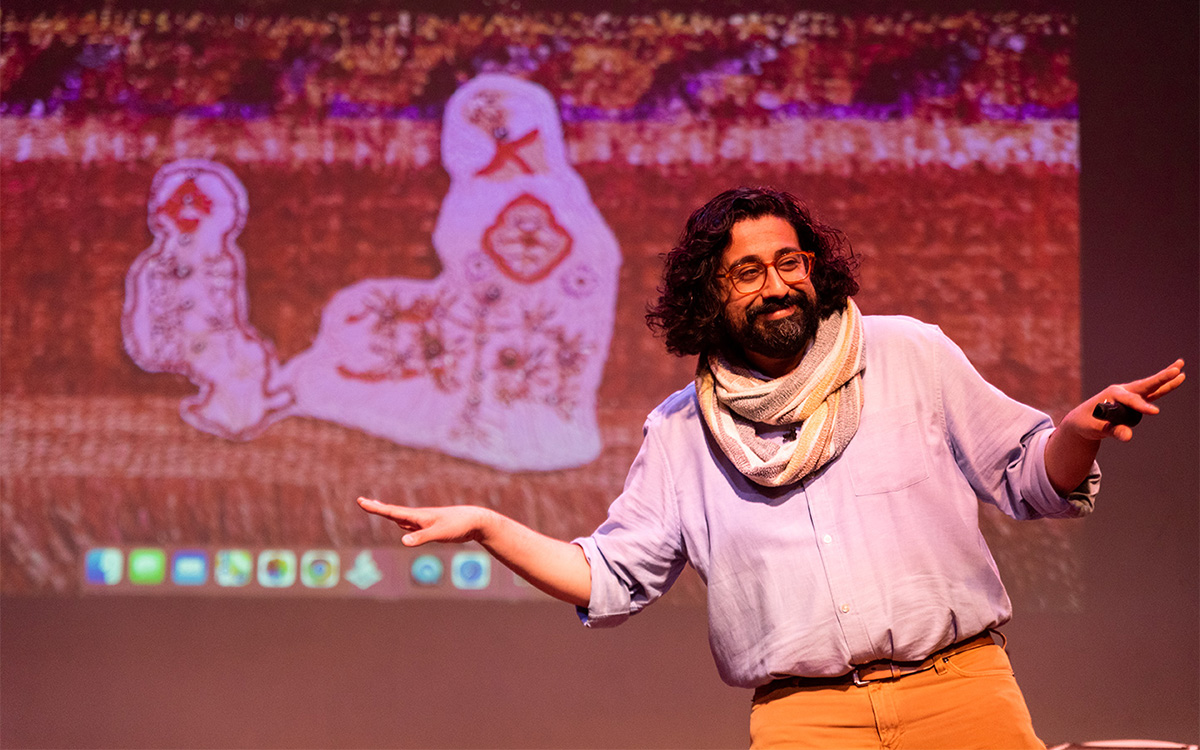
‘Amm(i)gone’
Thorough May 12
Woolly Mammoth Theatre
641 D St., N.W.
$60-$70
Woollymammoth.net
“Fully and utterly autobiographical.” That’s how Adil Mansoor describes “Amm(i)gone,” his one-man work currently playing at Woolly Mammoth Theatre.
Both created and performed by out artist Mansoor, it’s his story about inviting his Pakistani mother to translate Sophocles’s Greek tragedy “Antigone” into Urdu. Throughout the journey, there’s an exploration of family, queerness, and faith,as well as references to teachings from the Quran, and audio conversations with his Muslim mother.
Mansoor, 38, grew up in the suburbs of Chicago and is now based in Pittsburgh where he’s a busy theater maker. He’s also the founding member of Pittsburgh’s Hatch Arts Collective and the former artistic director of Dreams of Hope, an LGBTQ youth arts organization.
WASHINGTON BLADE: What spurred you to create “Amm(i)gone”?
ADIL MANSOOR: I was reading a translation of “Antigone” a few years back and found myself emotionally overwhelmed. A Theban princess buries her brother knowing it will cost her, her own life. It’s about a person for whom all aspirations are in the afterlife. And what does that do to the living when all of your hopes and dreams have to be reserved for the afterlife?
I found grant funding to pay my mom to do the translation. I wanted to engage in learning. I wanted to share theater but especially this ancient tragedy. My mother appreciated the characters were struggling between loving one another and their beliefs.
BLADE: Are you more director than actor?
MANSOOR: I’m primarily a director with an MFA in directing from Carnegie Mellon. I wrote, directed, and performed in this show, and had been working on it for four years. I’ve done different versions including Zoom. Woolly’s is a new production with the same team who’ve been involved since the beginning.
I love solo performance. I’ve produced and now teach solo performance and believe in its power. And I definitely lean toward “performance” and I haven’t “acted” since I was in college. I feel good on stage. I was a tour guide and do a lot of public speaking. I enjoy the attention.
BLADE: Describe your mom.
MANSOOR: My mom is a wonderfully devout Muslim, single mother, social worker who discovered my queerness on Google. And she prays for me.
She and I are similar, the way we look at things, the way we laugh. But different too. And those are among the questions I ask in this show. Our relationship is both beautiful and complicated.
BLADE: So, you weren’t exactly hiding your sexuality?
MANSOOR: In my mid-20s, I took time to talk with friends about our being queer with relation to our careers. My sexuality is essential to the work. As the artistic director at Dreams of Hope, part of the work was to model what it means to be public. If I’m in a room with queer and trans teenagers, part of what I’m doing is modeling queer adulthood. The way they see me in the world is part of what I’m putting out there. And I want that to be expansive and full.
So much of my work involves fundraising and being a face in schools. Being out is about making safe space for queer young folks.
BLADE: Have you encountered much Islamophobia?
MANSOOR: When 9/11 happened, I was a sophomore in high school, so yes. I faced a lot then and now. I’ve been egged on the street in the last four months. I see it in the classroom. It shows up in all sorts of ways.
BLADE: What prompted you to lead your creative life in Pittsburgh?
MANSOOR: I’ve been here for 14 years. I breathe with ease in Pittsburgh. The hills and the valleys and the rust of the city do something to me. It’s beautiful, it’ affordable, and there is support for local artists. There’s a lot of opportunity.
Still, the plan was to move to New York in September of 2020 but that was cancelled. Then the pandemic showed me that I could live in Pittsburgh and still have a nationally viable career.
BLADE: What are you trying to achieve with “Amm(i)gone”?
MANSOOR: What I’m sharing in the show is so very specific but I hear people from other backgrounds say I totally see my mom in that. My partner is Catholic and we share so much in relation to this.
I hope the work is embracing the fullness of queerness and how means so many things. And I hope the show makes audiences want to call their parents or squeeze their partners.
Out & About
The Rare Book Fair is coming to D.C.
Over 35 antiquarian booksellers from across the country to attend

The Capital Rare Book Fair will bring more than 35 antiquarian booksellers from across the country to D.C. from Friday, May 3 to Sunday, May 5 at the historic University Club at 1135 16th St., N.W.
This year, the fair will take over two floors in the illustrious mansion on 16th Street and showcase thousands of beautiful, notable, and rare books, maps, and historic documents from around the globe. Exceptional examples that will be offered include leaf 27 of a 40-leaf xylographic Biblia pauperum, a picture Bible from 1465 for $85,000 from Bruce McKittrick Rare Books, among many other intriguing selections.
Tickets are $50 and more information is available on the event’s website.

Friday, April 19
Center Aging Friday Tea Time will be at 2 p.m. on Zoom. This is a social hour for older LGBTQ adults. Guests are encouraged to bring a beverage of choice. For more information, email [email protected].
Go Gay DC will host “Drag Pageant” at 8 p.m. at Freddie’s Beach Bar and Restaurant. Net proceeds from this event will benefit EQUALITY NoVa, the local nonprofit organization dedicated to advancing equality in Northern Virginia. Attendance is free and more details are available on Eventbrite.
Saturday, April 20
LGBTQ People of Color Support Group will be at 1 p.m. on Zoom. This peer support group is an outlet for LGBTQ People of Color to come together and talk about anything affecting them in a space that strives to be safe and judgment free. For more details, visit thedccenter.org/poc or facebook.com/centerpoc.
Go Gay DC will host “LGBTQ+ Brunch” at 11 a.m. at Freddie’s Beach Bar & Restaurant. This fun weekly event brings the DMV area LGBTQ community, including allies, together for delicious food and conversation. Attendance is free and more details are available on Eventbrite.
Sunday, April 21
Go Gay DC will host “LGBTQ+ Dinner” at 7 p.m. at Federico Ristorante Italiano. Attendance is free and more details are available on Eventbrite.
AfroCode DC will be at 4 p.m. at Decades DC. This event will be an experience of non-stop music, dancing, and good vibes and a crossover of genres and a fusion of cultures. Tickets cost $40 and can be purchased on Eventbrite.
Monday, April 22
Center Aging: Monday Coffee & Conversation will be at 10 a.m. on Zoom. This is a social hour for older LGBTQ adults. Guests are encouraged to bring a beverage of their choice. For more details, email [email protected].
Tuesday, April 23
Pride on the Patio Events will host “LGBTQ Social Mixer” at 5:30 p.m. at Showroom. Dress is casual, fancy, or comfortable. Guests are encouraged to bring their most authentic self to chat, laugh, and get a little crazy. Admission is free and more details are on Eventbrite.
Genderqueer DC will be at 7 p.m. on Zoom. This is a support group for people who identify outside of the gender binary. Whether you’re bigender, agender, genderfluid, or just know that you’re not 100% cis. For more details, visit genderqueerdc.org or Facebook.
Wednesday, April 24
Job Club will be at 6 p.m. on Zoom. This is a weekly job support program to help job entrants and seekers, including the long-term unemployed, improve self-confidence, motivation, resilience and productivity for effective job searches and networking — allowing participants to move away from being merely “applicants” toward being “candidates.” For more information, email [email protected] or visit [email protected].
Asexual and Aromantic Group will be at 7 p.m. on Zoom. This is a space where people who are questioning this aspect of their identity or those who identify as asexual and/or aromantic can come together, share stories and experiences, and discuss various topics. For more details, email [email protected].
Thursday, April 25
The DC Center’s Fresh Produce Program will be held all day at the DC Center for the LGBT Community. People will be informed on Wednesday at 5:00 pm if they are picked to receive a produce box. No proof of residency or income is required. For more information, email [email protected] or call 202-682-2245.
Virtual Yoga with Charles M. will be at 7 p.m. on Zoom. This is a free weekly class focusing on yoga, breath work, and meditation. For more details, visit the DC Center for the LGBT Community’s website.
-
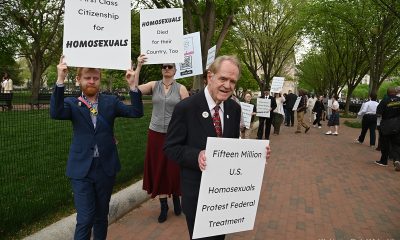
 District of Columbia2 days ago
District of Columbia2 days agoReenactment of first gay rights picket at White House draws interest of tourists
-

 District of Columbia2 days ago
District of Columbia2 days agoNew D.C. LGBTQ+ bar Crush set to open April 19
-
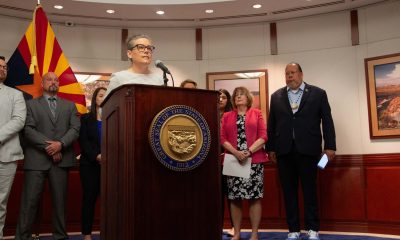
 Arizona2 days ago
Arizona2 days agoAriz. governor vetoes anti-transgender, Ten Commandments bill
-
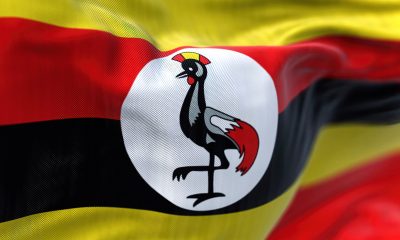
 Africa4 days ago
Africa4 days agoUgandan activists appeal ruling that upheld Anti-Homosexuality Act


